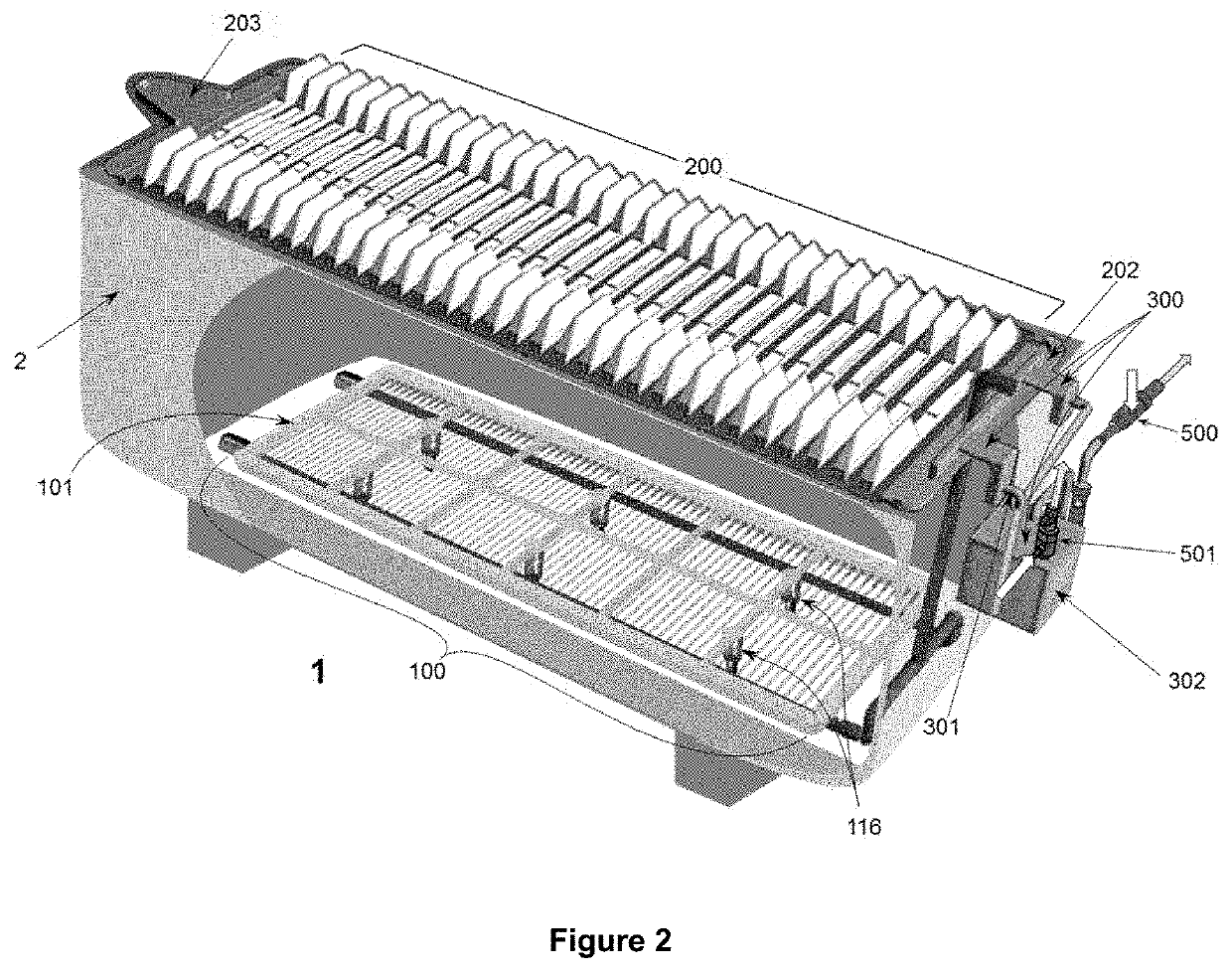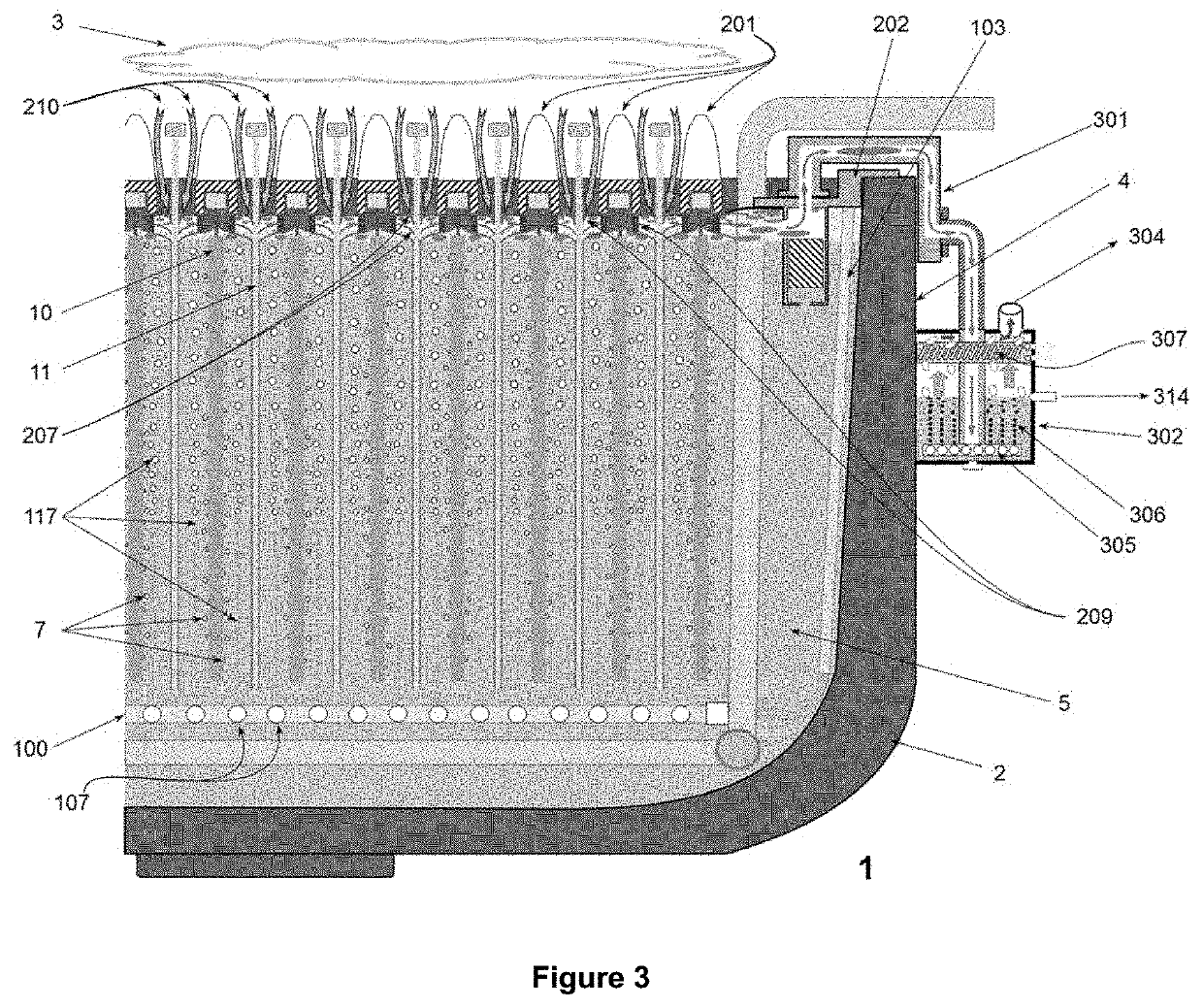Electrochemical reactor for processes for non-ferrous metal electrodeposition, which comprises a set of apparatuses for gently agitating an electrolyte, a set of apparatuses for containing and coalescing an acid mist, and a set of apparatuses for capturing and diluting acid mist aerosols remaining in the gas effluent of the reactor
a technology of electrochemical reactor and non-ferrous metal, which is applied in the direction of photochemical processes, mixers, and liquid separation agents, etc., can solve the problems of reducing both electrical efficiency and electrodeposited cathodic quality, reducing the efficiency of electrochemical electrodeposition, and limited feeding of electrolyte under hydraulic pressure to the container, so as to achieve the effect of expanding synergic possibilities
- Summary
- Abstract
- Description
- Claims
- Application Information
AI Technical Summary
Benefits of technology
Problems solved by technology
Method used
Image
Examples
Embodiment Construction
[0094]The objectives of the invention are implemented for a set of electrochemical deposition reactors (1) for copper—and other non-ferrous metals—operating with aqueous sulfuric solutions and anodic plates (10) of insoluble lead that generate O2 bubbles (7), specifically configured to install and allow continuous operation of the triad of systems and equipment to accommodate specific “cell by cell” copper (and other non-ferrous metal) electrowinning processes conducted in various industrial plants currently operating at densities current of 250-320 A / m2; the installation and concatenation of the triad in the containers (2) enables them to operate sustainably with current intensities above 400 A / m2; the innovations presented serve as well for the design and construction of new electrowinning Plants for operation at high current densities from 350 A / m2 and upwards, incorporating the same triad systems (FIGS. 1 and 2) of the invention, formed by:
(4) “CAP”—abbreviation for “Programmabl...
PUM
| Property | Measurement | Unit |
|---|---|---|
| current density | aaaaa | aaaaa |
| diameter | aaaaa | aaaaa |
| current density | aaaaa | aaaaa |
Abstract
Description
Claims
Application Information
 Login to View More
Login to View More - R&D
- Intellectual Property
- Life Sciences
- Materials
- Tech Scout
- Unparalleled Data Quality
- Higher Quality Content
- 60% Fewer Hallucinations
Browse by: Latest US Patents, China's latest patents, Technical Efficacy Thesaurus, Application Domain, Technology Topic, Popular Technical Reports.
© 2025 PatSnap. All rights reserved.Legal|Privacy policy|Modern Slavery Act Transparency Statement|Sitemap|About US| Contact US: help@patsnap.com



